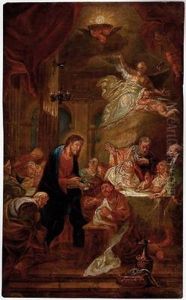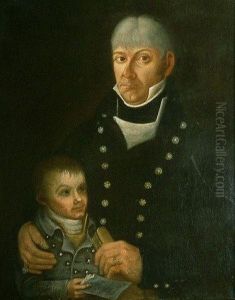Franz Anton Bustelli Paintings
Franz Anton Bustelli was an eminent Rococo modeller of porcelain figures. He was born in Locarno, which at the time was a Swiss town under the rule of the Italian Borromeo family, but is now part of Switzerland. Bustelli's exact date of birth is not recorded, but he was baptized on April 12, 1723. Little is known about his early life and training. It is speculated that he might have received his initial artistic education in Italy, which was common for artists from that region during that period.
Bustelli's work came to prominence when he joined the Nymphenburg Porcelain Manufactory, located near Munich in Bavaria, in 1754. This was one of the most important porcelain factories in Europe at the time. As a modeller, Bustelli brought innovative designs and a high level of craftsmanship to the factory's output. He is especially known for his series of figures representing characters from the Commedia dell'arte, an Italian theatrical tradition that was very popular across Europe. These figures are considered masterpieces for their dynamic poses, expressive faces, and intricate details.
During his time at Nymphenburg, Bustelli also created a wide range of other figures, including mythological subjects, children, and animals, showcasing his versatility and imaginative approach to porcelain art. His work is characterized by its graceful elegance and the subtle interplay of form and decoration. Bustelli's creations were highly prized by the Bavarian court and collectors throughout Europe.
Unfortunately, Bustelli's career was cut short when he died suddenly in 1763, at the age of 40. Despite his relatively short life and career, his legacy in the field of porcelain art is significant. Bustelli's works are now highly collectible and can be found in many major museums around the world, including the Bäuml Collection in the Nymphenburg Palace, the Bavarian National Museum in Munich, and the Victoria and Albert Museum in London. His influence can also be seen in the works of later porcelain artists who were inspired by his innovative approach to the medium.

